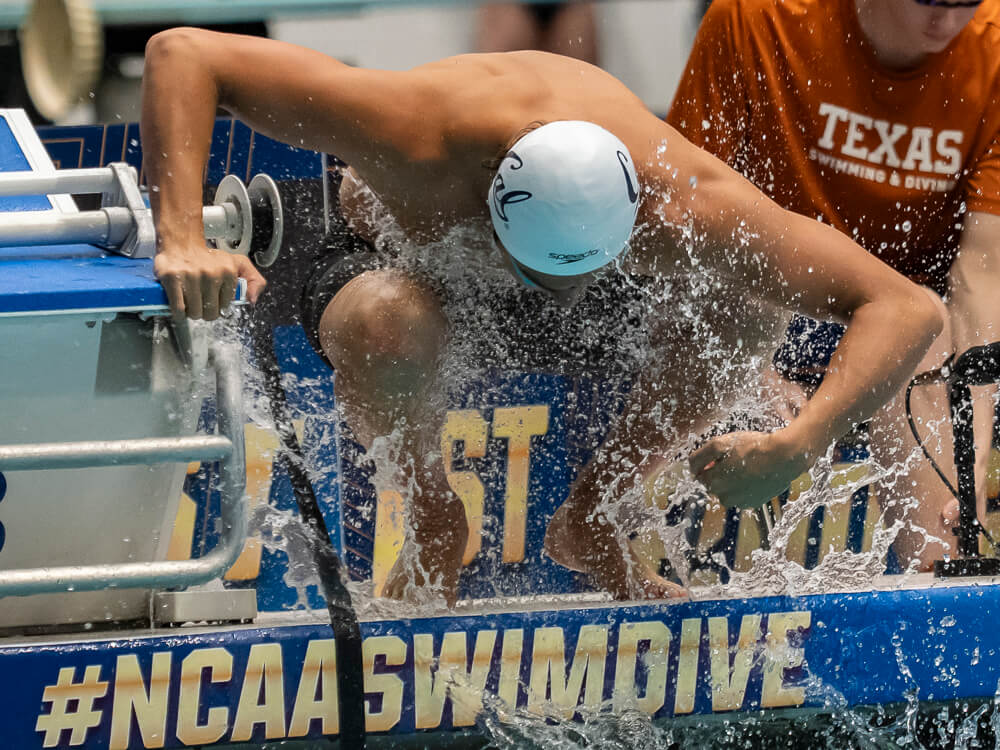Debunking College Swimming Myths
Many swimmers enter the recruiting process with ideas of where they want to live, what they’d like to study, and what schools they dream of representing in the pool. Along the way, though, some common misconceptions tend to add unnecessary stress. Here are some myths that swimmers often have, and the truth behind them.
Myth: Only a Few Coaches Have Reached Out, So I Only Have a Few Options
Many swimmers expect to receive texts from all of their dream schools once the recruiting window opens, but that rarely happens. Don’t be discouraged. Just because a school doesn’t contact you first, it doesn’t mean you can’t go there. Countless athletes have “made the first move” with a school and later received a scholarship offer from that university.
Think of it like the job market: most people don’t get a job because a recruiter reaches out to them. They send in applications, find employee contacts, and network. In college swimming, this can look like filling out recruiting questionnaires, finding coaches’ emails, sending follow-up messages to stay on their radar, or asking your club coach to help you make connections. With about 500 men’s collegiate swim teams and about 600 women’s teams, it may take some persistence and outreach.
Myth: If I Want to Be Successful, I Have to Go to a Division I School
After taking a look at the Division II and III National Championships, it’s clear that competition is high throughout all levels of collegiate swimming. Each year, Divisions II and III produce standout swimmers who can score at the top Division I conference meets and even qualify for the NCAA Division I Championships.
In 2021, Emory’s Andrew Wilson became the first Division III swimmer to represent Team USA at the Olympic Games. Success in college swimming is less about the division and more about finding the program where you will excel the most.
Myth: I Have to Commit By My Junior Year
If a coach pressures you with an unrealistic timeline, consider it a red flag. Sure, some teams are more competitive and move quickly to secure their roster, but coaches should be honest and up front about their timeline. If you’re heading into your senior year and haven’t committed yet, don’t panic. Plenty of swimmers commit during their senior year and go on to have successful and fulfilling athletic careers.
Myth: I Have to Get a Full Athletic Scholarship to Swim in College
Full athletic scholarships for swimmers are rare. Typically, coaches put together a package using athletic aid, academic scholarships, high school awards, and need-based assistance.
Strong academics can actually make you more recruitable because athletes who qualify for academic aid give coaches greater flexibility with their limited scholarship money. If you have solid grades and test scores, a coach may not need to offer as much athletic aid, which can make you a more appealing recruit.
You can also apply for additional scholarships and financial aid opportunities outside of athletics. Most swimmers receive a mix of support rather than an “athletic full ride.”
Myth: College Swimming Will be Just Like My Club Training
One great thing about club swimming is the variety of training programs available. The sport isn’t “one size fits all” – meaning two swimmers can compete in the same events, and have completely different training plans.
College swimming programs are just as varied, so your schedule and training may look very different from what you’re used to. Asking intentional questions during the recruiting process will help you narrow down your search and find a program that matches your strengths and needs.
Myth: If I Swim in College, I Won’t Have A Social Life
Many athletes worry that they’ll have to choose between their academics, social life, and athletics. However, with the right fit, balance is possible.
Some programs are more flexible and allow you to get involved in things outside the pool. Others demand a bigger commitment if you’re pursuing a difficult major and a highly competitive swim program.
Myth: Transferring Means I Quit or Failed
College athletic programs are constantly changing. Coaching staff turnover, evolving NCAA rules, and shifting team dynamics can all make the experience different from what you first signed up for. If your first program doesn’t feel right, transferring shouldn’t be seen as a failure, but as another opportunity to find the best fit for you. Coaches move around all the time to pursue what’s best for them, and you can, too.
